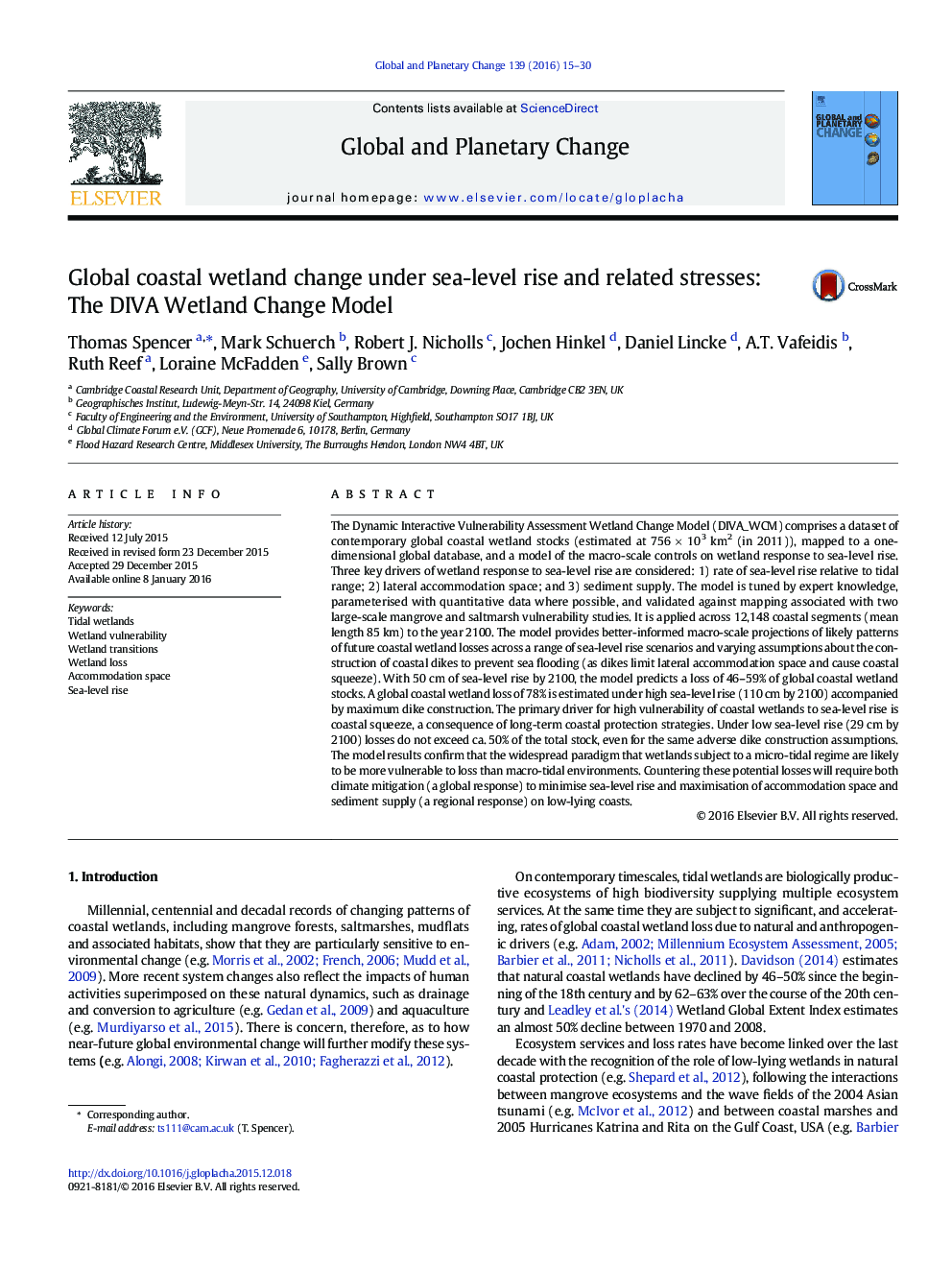| کد مقاله | کد نشریه | سال انتشار | مقاله انگلیسی | نسخه تمام متن |
|---|---|---|---|---|
| 6347940 | 1621643 | 2016 | 16 صفحه PDF | دانلود رایگان |
عنوان انگلیسی مقاله ISI
Global coastal wetland change under sea-level rise and related stresses: The DIVA Wetland Change Model
دانلود مقاله + سفارش ترجمه
دانلود مقاله ISI انگلیسی
رایگان برای ایرانیان
کلمات کلیدی
موضوعات مرتبط
مهندسی و علوم پایه
علوم زمین و سیارات
فرآیندهای سطح زمین
پیش نمایش صفحه اول مقاله

چکیده انگلیسی
The Dynamic Interactive Vulnerability Assessment Wetland Change Model (DIVA_WCM) comprises a dataset of contemporary global coastal wetland stocks (estimated at 756Â ÃÂ 103Â km2 (in 2011)), mapped to a one-dimensional global database, and a model of the macro-scale controls on wetland response to sea-level rise. Three key drivers of wetland response to sea-level rise are considered: 1) rate of sea-level rise relative to tidal range; 2) lateral accommodation space; and 3) sediment supply. The model is tuned by expert knowledge, parameterised with quantitative data where possible, and validated against mapping associated with two large-scale mangrove and saltmarsh vulnerability studies. It is applied across 12,148 coastal segments (mean length 85Â km) to the year 2100. The model provides better-informed macro-scale projections of likely patterns of future coastal wetland losses across a range of sea-level rise scenarios and varying assumptions about the construction of coastal dikes to prevent sea flooding (as dikes limit lateral accommodation space and cause coastal squeeze). With 50Â cm of sea-level rise by 2100, the model predicts a loss of 46-59% of global coastal wetland stocks. A global coastal wetland loss of 78% is estimated under high sea-level rise (110Â cm by 2100) accompanied by maximum dike construction. The primary driver for high vulnerability of coastal wetlands to sea-level rise is coastal squeeze, a consequence of long-term coastal protection strategies. Under low sea-level rise (29Â cm by 2100) losses do not exceed ca. 50% of the total stock, even for the same adverse dike construction assumptions. The model results confirm that the widespread paradigm that wetlands subject to a micro-tidal regime are likely to be more vulnerable to loss than macro-tidal environments. Countering these potential losses will require both climate mitigation (a global response) to minimise sea-level rise and maximisation of accommodation space and sediment supply (a regional response) on low-lying coasts.
ناشر
Database: Elsevier - ScienceDirect (ساینس دایرکت)
Journal: Global and Planetary Change - Volume 139, April 2016, Pages 15-30
Journal: Global and Planetary Change - Volume 139, April 2016, Pages 15-30
نویسندگان
Thomas Spencer, Mark Schuerch, Robert J. Nicholls, Jochen Hinkel, Daniel Lincke, A.T. Vafeidis, Ruth Reef, Loraine McFadden, Sally Brown,